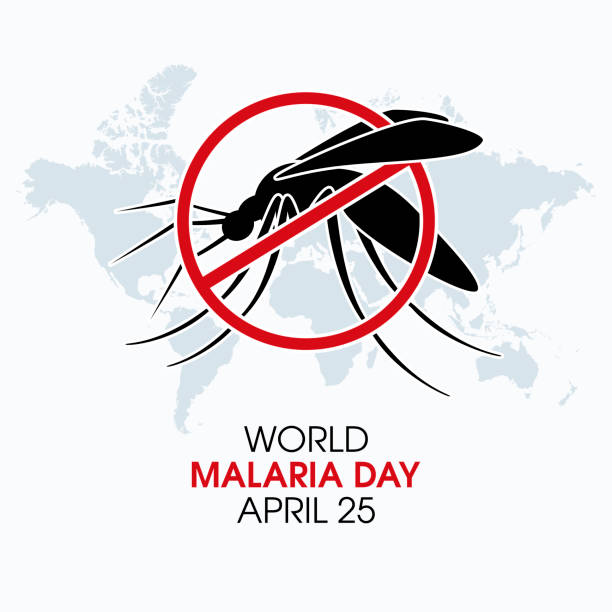World Malaria Day 2025: A Global Call to Reinvest, Reimagine, and Reignite the Fight Against Malaria
Every year on April 25th, the world observes World Malaria Day, a day dedicated to raising awareness about malaria, celebrating progress in its control, and mobilizing action to combat this deadly yet preventable disease. Established in 2007 by the World Health Assembly, this day evolved from Africa Malaria Day, which had been observed since 2001 to address the disproportionate burden of malaria on the African continent .

Malaria remains one of the most severe public health challenges globally, particularly in tropical and subtropical regions, where it claims hundreds of thousands of lives annually, primarily among children under five and pregnant women . The theme for World Malaria Day 2025, “Malaria Ends with Us: Reinvest, Reimagine, Reignite,” underscores the urgent need for renewed commitment, innovative strategies, and sustained investment to eliminate malaria .
The Global Burden of Malaria
Despite significant progress over the past two decades, malaria continues to exert a devastating toll. In 2023, there were an estimated 263 million new cases and 597,000 deaths globally, with 95% of cases and 94% of deaths occurring in the WHO African Region . Sub-Saharan Africa remains the epicenter of the crisis, where fragile health systems, insecticide and drug resistance, climate change, and humanitarian crises exacerbate the challenge . Children under five account for nearly 80% of malaria deaths, highlighting the disease’s cruel impact on the most vulnerable . Outside Africa, regions such as South Asia, Latin America, and parts of the Western Pacific also face persistent transmission, particularly in remote and conflict-affected areas.
The economic repercussions are equally staggering. Malaria drains national economies, reducing productivity and straining healthcare systems. Studies estimate that achieving a 90% reduction in malaria cases by 2030 could boost the GDP of affected countries by $142.7 billion, illustrating that malaria control is not just a health imperative but an economic one .
Historical Progress and Current Challenges
The fight against malaria has seen remarkable milestones. Since 2000, global efforts have averted 2.2 billion cases and 12.7 million deaths, thanks to expanded access to insecticide-treated nets (ITNs), rapid diagnostic tests, artemisinin-based combination therapies (ACTs), and indoor residual spraying (IRS) . In 2023 alone, these interventions prevented 177 million cases and 1 million deaths. Countries like China (certified malaria-free in 2021) and Malaysia (no human malaria cases for six consecutive years) demonstrate that elimination is achievable .
However, progress has stalled in recent years. Funding shortfalls, climate change-induced extreme weather, and mosquito resistance to insecticides threaten to reverse gains. The COVID-19 pandemic further disrupted malaria services, leading to spikes in cases in some regions . The Global Fund to Fight AIDS, Tuberculosis, and Malaria reports that $4.3 billion annually is needed to meet 2030 targets, yet current investments fall short . Without urgent action, the world risks a resurgence, reminiscent of the 1960s, when abandoned eradication efforts led to decades of preventable deaths .
The 2025 Theme: Reinvest, Reimagine, Reignite
The 2025 theme encapsulates a three-pronged strategy:
Reinvest – Sustained and increased funding is critical. The Global Fund’s 2025 replenishment and Gavi, the Vaccine Alliance are pivotal to scaling up interventions like ITNs, ACTs, and vaccines . Countries must also boost domestic financing for healthcare systems to ensure long-term resilience .
Reimagine – Innovation is key to overcoming barriers. New tools such as dual-active ingredient ITNs, next-gen antimalarials, and gene-drive mosquitoes (a focus of the Johns Hopkins 2025 Symposium) promise breakthroughs . Data-driven strategies, like targeted drug administration in Papua New Guinea’s remote villages, are proving effective .
Reignite – Community engagement and political will must be revitalized. Grassroots campaigns, like “Zero Malaria Starts with Me,” empower local leaders to drive change . The RBM Partnership to End Malaria emphasizes country ownership and multisectoral collaboration .
Innovations and Interventions
Vaccines: A landmark achievement is the rollout of RTS,S and R21 vaccines, now deployed in 19 African countries. These vaccines, combined with seasonal malaria chemoprevention (SMC), could reduce child deaths by 70% .
Vector Control: Research into genetically modified mosquitoes (e.g., Oxitec’s engineered males) and spatial repellents offers hope for curbing transmission .
Treatment Advances: Artemisinin resistance in Southeast Asia necessitates new drugs. Initiatives like the Global Malaria Action Plan (GMAP) prioritize R&D for next-gen therapies .
Call to Action: How the World Can Respond
Advocate for Policy Change – Urge governments to prioritize malaria in health budgets and global forums .
Support NGOs – Donate to organizations like Malaria No More or volunteer for net-distribution campaigns .
Promote Education – Debunk myths (e.g., malaria is not contagious) and teach prevention (e.g., net use, symptom recognition) .
Leverage Technology – Mobile apps for case reporting and AI for outbreak prediction enhance responsiveness .
Conclusion: A Future Without Malaria Is Possible
World Malaria Day 2025 is both a celebration of progress and a stark reminder of the work ahead. With collective action, the world can eliminate malaria by 2030—saving millions of lives and unlocking economic potential. As Dr. Michael Adekunle Charles of the RBM Partnership asserts, ending malaria is “a smart investment in a healthier, fairer future” . The tools exist; the choice to act is ours.
Photo from: iStock
0 Comment to "World Malaria Day : A Global Call to Reinvest, Reimagine, and Reignite the Fight Against Malaria"
Post a Comment